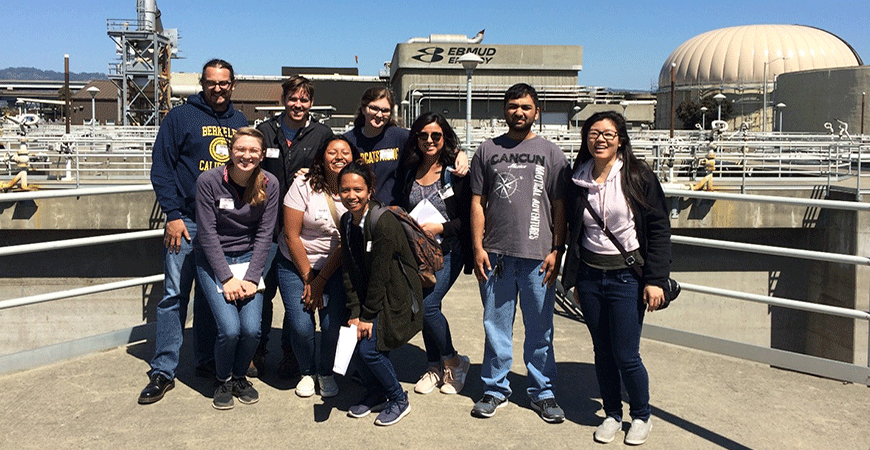
Three field trips this semester gave Professor Marc Beutel’s students an up-close understanding of biological wastewater processes used in treatment plants across the country.
Most recently, they toured the wastewater treatment plant in Oakland, operated by East Bay Municipal Utility District. The plant treats sewage for more than 685,000 people in the East Bay using a process called “activated sludge.” Bacteria convert organic waste to carbon dioxide and bacterial biomass (aka activated sludge), and once the bacteria settle out, the result is clean, clear water.
Students also got to see a process called co-digestion, in which that settled biomass is mixed with organic food waste from homes and treated in anaerobic digesters. Bacteria in the digesters convert the organic waste to methane, which is burned in engines to produce electricity. Anaerobic digestion produces enough electricity to run the entire Oakland plant.
The students also visited the Merced municipal wastewater treatment plant, which treats wastewater for about 80,000 residents using activated sludge, and the Gallo Winery in Livingston, which uses anaerobic digestion to convert organic vineyard waste to methane and energy.
“These field trips are an important complement to our lectures and design problems we work on in class. The students get a firsthand look at the scale and complexity of this impressive infrastructure that protects our health and keeps our water clean,” Beutel said.
Environmental Systems master’s student Julia Burmistrova recently received a $10,000 Blum Center seed grant to study using co-digestion to sustainably manage the enormous amounts of food waste created at Yosemite National Park. Rather than sending that waste to a landfill — which costs money — it could be converted to methane and electricity at the park’s wastewater treatment plant in El Portal, which is slated for an $80 million upgrade.






